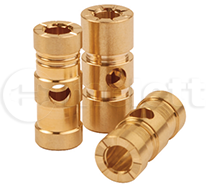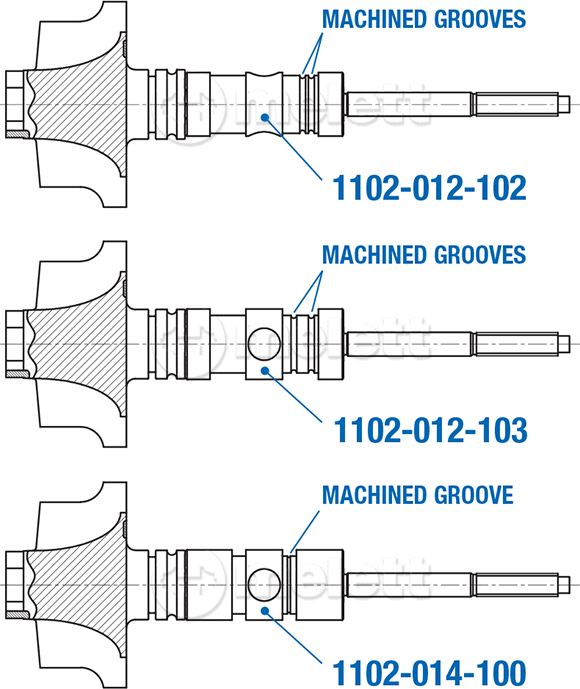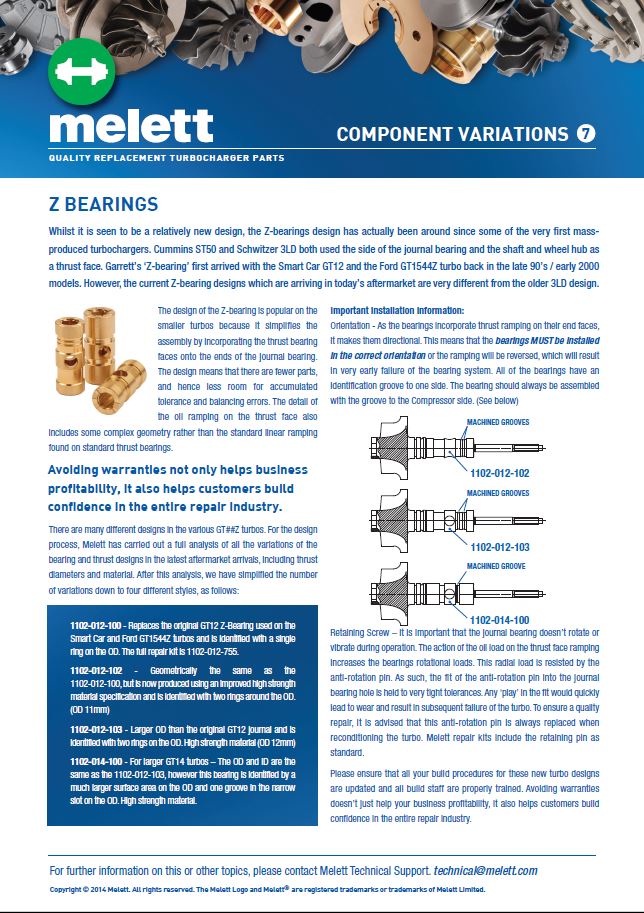What Makes the GT12-15 Z-Bearings different?
Whilst it is seen to be a relatively new design, the Z-bearings design has actually been around since some of the very first mass produced turbochargers.
Cummins ST50 and Schwitzer 3LD both used the side of the journal bearing and the shaft and wheel hub as a thrust face. Garrett’s ‘Z-bearing’ first arrived with the Smart Car GT12 and the Ford GT1544Z turbo back in the late 90’s / early 2000 models. However, the current Z-bearing designs which are arriving in today’s aftermarket are very different from the older 3LD design.

The design of the Z-bearing is popular on the smaller turbos because it simplifies the assembly by incorporating the thrust bearing faces onto the ends of the journal bearing. The design means that there are fewer parts, and hence less room for accumulated tolerance and balancing errors. The detail of the oil ramping on the thrust face also includes some complex geometry rather than the standard linear ramping found on standard thrust bearings.
There are many different designs in the various GT##Z turbos. For the design process, Melett has carried out a full analysis of all the variations of the bearing and thrust designs in the latest aftermarket arrivals, including thrust diameters and material. After this analysis, we have simplified the number of variations down to four different styles, as follows:
1102-012-100 – Replaces the original GT12 Z-Bearing used on the Smart Car and Ford GT1544Z turbos and is identified with a single ring on the OD. The full repair kit is 1102-012-755;
1102-012-102 – Geometrically the same as the 1102-012-100, but is now produced using an improved high strength material specification and is identified with two rings around the OD. (OD 11mm);
1102-012-103 – Larger OD than the original GT12 journal and is identified with two rings on the OD. High strength material (OD 12mm);
1102-014-100 – For larger GT14 turbos – The OD and ID are the same as the 1102-012-103, however this bearing is identified by a much larger surface area on the OD and one groove in the narrow slot on the OD. High strength material;
Important Installation Information:
Orientation – As the bearings incorporate thrust ramping on their end faces, it makes them directional. This means that the bearings MUST be installed in the correct orientation or the ramping will be reversed, which will result in very early failure of the bearing system. All of the bearings have an identification groove to one side. The bearing should always be assembled with the groove to the Compressor side.

Retaining Screw – It is important that the journal bearing doesn’t rotate or vibrate during operation. The action of the oil load on the thrust face ramping increases the bearings rotational loads. This radial load is resisted by the anti-rotation pin, as such, the fit of the anti-rotation pin into the journal bearing hole is held to very tight tolerances. Any ‘play’ in the fit would quickly lead to wear and result in subsequent failure of the turbo.
To ensure a quality repair, it is advised that this anti-rotation pin is always replaced when reconditioning the turbo. Melett repair kits include the retaining pin as standard. Please ensure that all your build procedures for these new turbo designs are updated and all build staff are properly trained. Avoiding warranties doesn’t just help your business profitability, it also helps customers build confidence in the entire repair industry.



